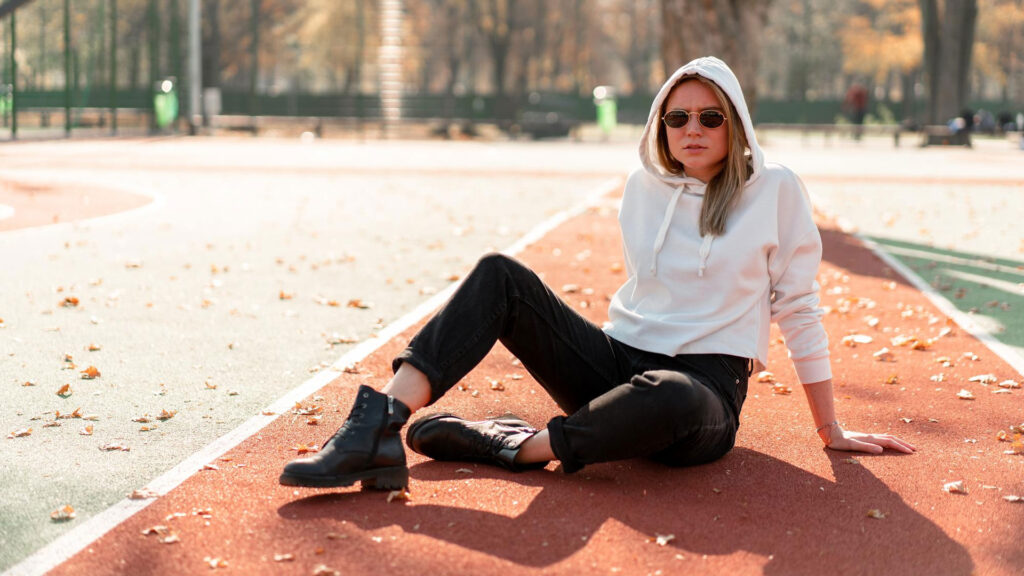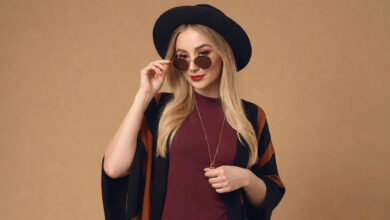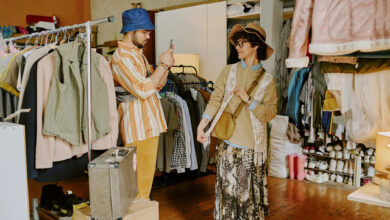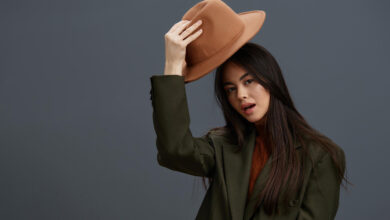Imagine you’re flipping through a photo album, and you see pictures of people from a long, long time ago. You might notice that the clothes they’re wearing look pretty different from what you see today. That’s because fashion, which is just a fancy word for the style of clothes, shoes, and accessories we wear, changes a lot over time. Fashion is like a time machine—it shows us how people wanted to look and what they thought was cool or beautiful at different points in history. Think about jeans, for example. They started out as tough pants for miners, but now almost everyone has a pair. This evolution of a specific trend: how it’s changed over the decades, is super interesting! Designers come up with new ideas, celebrities wear them, and before you know it, those ideas spread all over and become a part of everyday outfits. Each decade, like the groovy ’60s or the colorful ’80s, had its own unique flair. But it’s not just about looking good; fashion can also tell us a lot about what was going on in the world during those times. So next time you put on your favorite outfit, think about how it might be a little piece of history that you’re carrying forward into the future!
Way Back When: Early Fashion Days
Imagine stepping back in time to the 1920s – a sparkling era known for its unique style. Women dazzled in their daily lives, wearing flapper dresses adorned with shiny beads and playful fringes that danced as they moved. These dresses were not just for parties; they were a staple for many women, showcasing a blend of comfort and glamour.
Meanwhile, men’s fashion was about looking sharp and polished. Suits were the norm, complete with waistcoats, and crisp, pressed shirts. Adding to the dapper look, men often donned fedoras or bowler hats, which served as a symbol of sophistication. This attention to detail in dressing was not reserved for special occasions; it was part of their daily attire.
Back then, fashion was more than clothes; it was a cultural statement. The roaring twenties were a time of economic prosperity and social change, which was reflected in the bold fashion choices. For many, the way they dressed was a way to express newfound freedoms and a desire for elegance in everyday life.
So, why did everyone dress up so much? It was a mix of social expectations and the thrill of modernity. People took pride in their appearance and enjoyed the art of dressing well. Fashion was a serious affair, and everyone wanted to present their best self to the world, whether they were stepping out to the grocery store or attending a glitzy party.
Understanding this era’s fashion helps us appreciate the transformation of style over the years. While today’s fashion is more casual, the 1920s remind us of a time when elegance was the norm, influencing how we view style and sophistication to this day.
Groovy Times: The 1950s to 1970s
The 1950s marked a significant shift in fashion and culture. After the disciplined styles of the wartime 1940s, the ’50s brought in a breeze of change. Women embraced the poodle skirt, a wide-swinging dress named after the poodle appliqués that often decorated them. These skirts were typically paired with snug sweaters or blouses that highlighted a narrow waist, a look that became iconic for the era. Men, on the other hand, were often seen in leather jackets, which became a symbol of rebellion thanks to popular movies of the time. This jacket was usually worn with jeans, which had entered mainstream fashion, and a pair of sturdy boots.
As we moved into the 1960s, fashion took an even bolder turn. This period was all about self-expression and breaking traditional norms. Bright, psychedelic colors and patterns were in vogue. Tie-dye shirts, which involved twisting and dying fabric to create unique, vibrant patterns, became popular among young people. These shirts were a way to make a statement without saying a word, mirroring the decade’s revolutionary spirit.
The 1970s continued the trend of colorful and outlandish fashion. Bell-bottom pants, which flared out from the knee down, became a staple for both men and women. They were often worn with platform shoes, which added height and an element of fun to the look. This era was also known for its emphasis on peace and love, a sentiment that was reflected in the relaxed and carefree clothing styles. Accessories like headbands and peace symbol necklaces were common, rounding out the look of a generation eager to promote harmony and self-expression.
Throughout these three decades, fashion evolved as a reflection of the changing social attitudes and cultural movements. From the conservative post-war 1950s to the expressive and sometimes radical styles of the ’60s and ’70s, clothing became a way for people to connect with the world around them. It wasn’t just about looking good; it was about making a statement and being part of a larger conversation.
Radical Changes: The 1980s to 2000s
The 1980s were a time of bold statements in the fashion world. People loved to stand out, using neon colors that you could almost see from space! These bright hues were splashed across T-shirts, socks, and even shoelaces. It wasn’t just the colors that were big; hairstyles reached new heights too. Big hair was the trend, with many using hairspray to make their hair as voluminous as possible. This was the era of the ‘power dressing,’ where both men and women wore outfits to make strong impressions, including shoulder pads and tailored suits.
Then came the 1990s, which turned down the volume a bit but had its own unique flair. Denim became the go-to fabric, with people wearing jeans, jackets, and even overalls made from it. Another popular trend was baggy pants, offering a more relaxed fit that was both comfortable and stylish. This decade also saw the rise of grunge fashion, with flannel shirts and ripped jeans becoming a statement of youth rebellion. The ’90s was about expressing individuality and often mixed casual wear with high fashion.
As we entered the early 2000s, fashion took another turn. This era was known for its love of cargo pants, which were not only stylish but also practical, with their multiple pockets. Shiny materials also caught the eye, and outfits with a bit of shimmer were all the rage. This period was influenced by the rise of pop culture and celebrities, with music icons like Britney Spears and boy bands setting trends. Accessories like choker necklaces and bucket hats also became must-have items during this time.
Each of these decades had a distinct style that reflected the culture and attitudes of the time. Fashion is like a time machine, with each era’s trends telling us a story about the people and what was important to them. As we look back, we can see how these styles have laid the groundwork for today’s fashion, with many old trends making a comeback in modern ways.
Today’s Trends and Tomorrow’s Fashion

Fashion today is like a time machine. It takes bits and pieces from different eras and gives them a modern twist. For example, you’ve probably seen people wearing hoodies and leggings. These are super comfortable and have become favorites for everyone, from kids in school to adults running errands. But it’s not just about comfort; it’s about style too. That’s why we often see these simple pieces with bold prints or in unusual materials.
But fashion isn’t just stuck on looks; it’s also getting smarter. Imagine wearing a jacket that can power up your smartphone. Sounds like something from a sci-fi movie, right? Well, it’s real! Designers are now creating tech-savvy clothing with built-in chargers and other cool features. This means you can stay connected without worrying about your phone dying in the middle of the day.
Looking ahead, fashion’s future seems even more exciting. We might see outfits that can do incredible things like change colors based on how we’re feeling. If you’re happy, your shirt might turn a bright yellow, or if you’re feeling calm, it might shift to a cool blue. It’s all about using technology to make fashion more personal and interactive.
So, as we keep an eye on the runway, let’s get ready for a world where our clothes do more than just look good. They’ll be a blend of comfort, style, and innovation that will make our lives easier and a lot more fun.
Why Fashion Keeps Changing
Fashion changes for lots of reasons. Sometimes it’s because of new inventions, like when stretchy fabrics were made. Other times, it’s about what’s happening in the world, like when movies or music stars start wearing something different and everyone wants to copy them. It’s all about creativity and having fun with what you wear!




